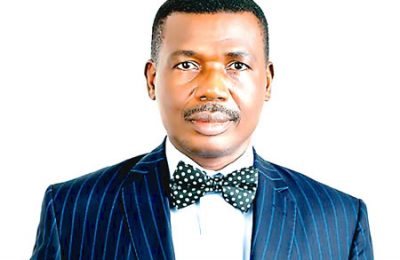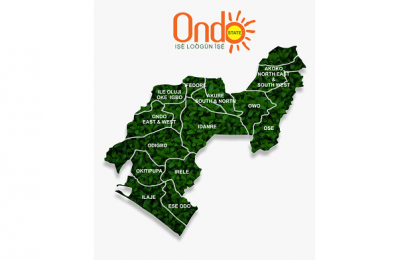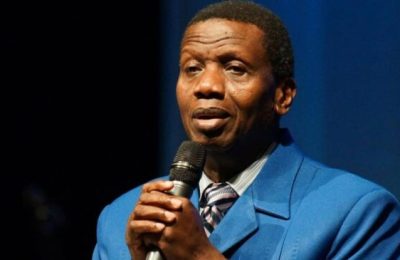July 5 2024 was a historic day in the political and cultural annals of Aáwé town. That day was the memorable culmination of more than thirty years of a struggle to achieve the status of a beaded monarch for the Alaawe of Aáwé, Oba Cornelius Taiwo Oladokun. And the Oyo State Governor, Engr. Seyi Makinde, made this feat possible by the singularly courageous act of cutting through the red tape of political shenanigans and prejudices to underscore historical imperatives that have to do with the cultural status of Aáwé as a significant Yoruba community in the southwest. Aáwé has always been a town that has been shaped by sociocultural and political conflicts and circumstances. And so, it becomes inevitable to connect this current breakthrough with the trajectories of so many others that situate Oba Taiwo Oladokun right within the dynamics of the Aáwé forebears and the Aáwé mystique.
What I have been calling the Aáwé mystique derives from Aáwé’s pragmatic mix of critical enlightenment, communal investment deriving from social capital, and educational commitment that facilitate the capacity of a small town to forge its own path within the context of complex socio-cultural ferment from then till now. Aáwé’sstrength lies in the generational, communal and diasporic investment that birthed great names that contributed to Aáwé’s image of resilience and progress. Even though Aáwéis a small Yorùbá town, it carries the weight of great achievements—the aggregation of its diverse indigenous pool into a developmental capital that propels continuous advancement in social, cultural, economic and political terms. Aáwé’sindigenous pool is made up of the expatriates abroad who invested in educational advancement and those, equally educated, who stayed behind to keep up the chain of communal commitment and advancement.
This mystique is founded on an even more fundamental governance principle that takes the grassroots seriously as the basis of a distinct and peculiar development founded on subsidiarity and social capital. These two principles form the basis of local governance that embeds governance and development in traditional institutions and the will of the members of the grassroots. I have provided these sociological and political narratives to underscore two points. The first is to underscore the rationale behind the doggedness and courage of His Royal Majesty, Oba Cornelius Abiola Taiwo Oladokun. This kind of struggle and sacrifice to realize the transformation of the status of the monarchy at Aáwé could only further elevate the status of the town and the historical forbearance of Aáwé’s forebears. The Kabiyesi is only following in the footsteps of the Aáwé ancestors who kept up the trajectory of historical and cultural responsibility to the town and to posterity. The new bearded crown is therefore a testimonial to the historical resilience of Aáwé as a small town that withstood the complexities and intrigues of being situated within the context of a larger Yorùbá historical circumstances that had the capacity to swallow it up.

More importantly, therefore, beyond the pomp and circumstances of the coronation, I am reading the entire event as Aáwé’s Nehemiah’s moment. At a very critical juncture in time, the biblical Nehemiah came to that conscious moment when all circumstances became propitious for him to take on the challenge of harnessing the will of the people and the resources of the land to reconstruct the walls of Jerusalem. I am convinced that Aáwé has reached its own critical moment when there is a conjunction of history, vision and possibilities; it is a moment to rehabilitate the shared vision that has never failed to unite the Aáwé homeland and the Aáwé diaspora, or the Aáwé people and its distinguished elites towards a sustainable developmental future. Given the committed efforts of Aáwé’s ancestors to the Aáwé mystique, there is already in place a vast demography of generational capital—in terms of human capital and available resources—that creates a space of possibilities. What must then be added is a context for the sharing of opinions and blueprints for moving Aáwé forward. And it is the responsibility of the Alaawe to facilitate the flowering of the space that accommodates different shades of opinions and scenarios within leadership large-hearted seminal spirit; especially the peculiar one, required to manage a demographic of people with perhaps one of the largest professors and professionals per capital in the world, for moving Aáwé forward.
Like Nehemiah, these needed conversations and discourses need to be had around the urgency of taking Aáwé to the next level of composite development. There is no questioning the visible and tangible level of infrastructural achievementsthat dot the landscape of Aáwé as a result of self-help efforts.And they are though few, but too numerous to be mentioned, from the Oba’s palace to the OdoSogidi tourist center, and from the police post to the bank. We must also not fail to mention the industrializing spirit of late Chief (Sir) Anthony Amoje (the Otun of Aawe and his Amo Sanders), Chief DeboOmotoso(the Asiwaju of Afijio and his Bond Chemicals), etc. These self-help and industrial activities tell a tale of communal and collective responsibilities to the perceived need of a community that has always been aware of itself. However, by reason of this significant event of the crowning of the Aáwé monarch, we are challenged to rethink Aáwé’s development status and to take the self-help initiatives a fundamental step further. This is to the extent that the existing self-help efforts provide the enabling motivation to ground real development that transforms the well-being of the Aáwé people.
I mentioned that part of the Aáwé mystique is the available demography of people and resources that has been accumulating for a long time. This implies that there is really no need to reinvent the development wheel in putting Aáwé on the map. Starting from the Egbe Omo Ibile Aáwé to the Aáwé Development Plan: The OPTICOM Approach—and the ongoing but relevant Chief Emmanuel Adisa, the Asiwaju of Aawe-led attempt at developing an Aáwé Vision 2050, a blueprint that encompasses Aáwé Economic Renaissance and Restructuring for Economic Activities and Revitalization—speaks to the larger intention to take Aáwé beyond its present status in terms of leveraging local governance principles. For instance, Professors Ojetunji Aboyade and Akin Mabogunje’s OPTICOM—from optimum community—represents a unique experimental approach to grassroots mobilisation for community development. It is an attempt at establishing interactive platforms between researchers and grassroots producers in a unique synergy that facilitates the critical flow and fusion of knowledge and expertise. The OPTICOM thesis rests on the assumption that traditional structures possess the inherent capacity, borne out of centuries of adaptability and resilience, to bear the weight of responsible policy initiatives properly managed by equally responsible and development-sensitive leadership.
A revitalized OPTICOM approach, adapted to current development challenges, will provide the framework for transforming individual efforts into cooperative endeavors. For example, Aáwé farmers could be given the opportunity of re-organizing into enhanced cooperative societies and the building of entrepreneurial networks that could connect them with multi-sourced credit and infrastructural supports within a structured agro-processing industry value chain. This feeds directly into the poverty alleviation component of the Opticom model that is meant to reduce the burden of individual efforts that does not usually amount to much outside of cooperative capacities. This also speaks to Aáwé’s small and medium enterprises whose tenacious capacities as cottage industries not only delimit Aáwé’s comparative advantages, like the ebuose (black soap) industry but also remain the key to the creative industrial and economic transformation of Aáwéland. When the late Prof. Mabogunje consolidated this component in the celebrated experiment in Ijebu Development Initiative on Poverty Reduction (IDIPR), its success had the critical support and the transformational leadership inspiration of the HRM the Awujale of Ijebuland, Oba Sikiru KayodeAdetona. This is then the crucial benchmarking of traditional governance structure and development achievement that Aáwé needs to emulate.

The development drive in Aáwé is also tied further to the dream of connecting Aáwé to the world, especially through age-long struggle to facilitate the establishment of a tertiary institution, as well as the urgent construction and rehabilitation of Aáwé’s network of roads and highways. Three highways are crucial in this regard—the Aáwé-Ife Odan, Aáwé-Akinmorin and Aáwé-Iwo roads. These are significant contributors to the industrialization of Aáwé. At the sociocultural level, Aáwé is also embedded in a historical and cultural axis under the sway of the Alaafin of Oyo. This place a heavy burden of wisdom and diplomacy on the Alaawe to find the right amount of relational skills and diplomacy that will make the peaceful coexistence between the different interests within Aawetown and those in diaspora on the one hand, and with our neighbors on the other, the centre-point of Aáwé’s development.And given that the days of imperialist expansion are long gone, what we are left with is a scenario of mutual and peaceful coexistence within the context of regional advancement that Aáwé itself can benefit from.
Therefore, even before the euphoria of the crowning ceremony wears off, it is time to commence the process of communal dialogue instigated by the Alaawe, the council of chiefs, Awe Development Corporation, the numerous egbe omo ibile Aawe, the Aáwé elite at home and in the diaspora, and the Aáwé people themselves. It is high time Aáwé took its place in the comity of places that deploy local governance through the political and sociocultural sophistication of their traditional governance structures to connect their people to human flourishing. This is a critical junction when the broken walls of Aáwé’s development trajectories needed to be rebuilt. And I believe the omen is auspicious sufficiently for us to restart the formidable engine of progress.
Professor Tunji Olaopa Professor of Public Administration & Chairman, Federal Civil Service Commission, Abuja.
ALSO READ: ‘My good friend’, Atiku salutes Obi at 63







